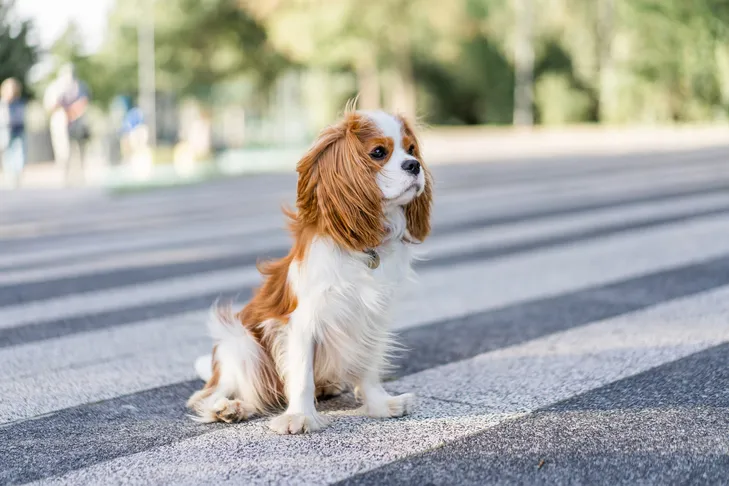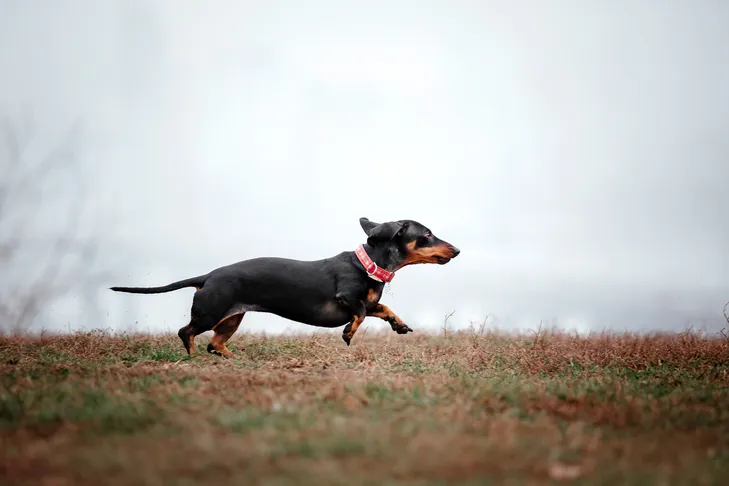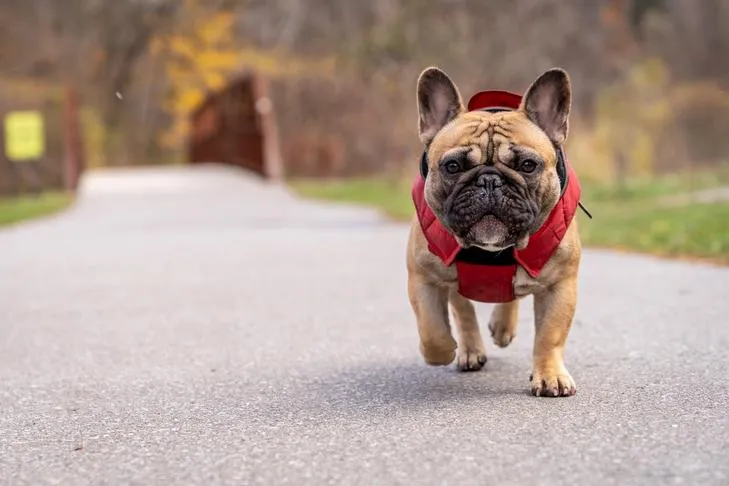It’s a familiar scenario for many dog owners: calling your dog’s name repeatedly only to watch them continue their fascinating sniff-venture. When you issue the “come” command, you’re asking your dog to immediately disengage from whatever captivating activity they’re involved in and return to you. That’s a significant request, and a reliable recall is far more than just a convenience – it’s a potentially life-saving skill. In emergencies, knowing your dog will promptly return to your side, regardless of distractions, provides invaluable peace of mind. This comprehensive guide will walk you through the steps on How To Train A Dog To Come Back To You consistently, building a strong foundation for a trusting and obedient relationship. For those eager to delve deeper into effective recall techniques, you can explore various methods that enhance this crucial command.
Laying the Foundation: Essential Pre-Recall Training
Before diving into the “come” command, ensuring your dog understands a few foundational cues is vital. These preliminary steps establish clear communication and control, paving the way for a solid recall.
The Name Game: Teaching “Pay Attention”
Your dog’s name should be a powerful signal meaning “pay attention to me; something good is about to happen!” This focus is the first step towards a reliable recall.
Here’s how to play the name game:
- Start in a Quiet Space: With your dog near you, say their name clearly and enthusiastically.
- Reward the Look: The moment your dog looks at you, immediately mark the behavior (with a clicker or a verbal “yes!”) and reward them with a high-value treat and praise.
- Repeat and Reinforce: Practice this frequently in short sessions (1-2 minutes) throughout the day.
- Add Distance and Distraction: Once your dog consistently looks at you when their name is called, gradually increase the distance between you and introduce minor distractions, always rewarding their focus.
In no time, your dog will associate their name with positive outcomes, ensuring they always have an ear ready, anticipating a potential reward.
 A focused Cavalier King Charles Spaniel looking at its owner during name recognition training.
A focused Cavalier King Charles Spaniel looking at its owner during name recognition training.
Mastering the “Gotcha”: The Collar Grab
Many dogs instinctively pull away when you reach for their collar. However, in an emergency, you need to be able to safely and quickly secure your dog. This “gotcha” exercise also proves invaluable for clipping on a leash or leading your dog to the bath. Just like the name game, the goal is to teach your dog that a collar grab leads to something wonderful.
Follow these steps for successful collar grab training:
- Lure and Approach: Entice your dog towards you with a highly appealing treat. Let them lick or gently nibble the treat, but don’t release it fully yet.
- Say “Gotcha” and Grab: As your dog enjoys the treat, gently and slowly reach for and take hold of their collar while saying “gotcha.”
- Reward Immediately: Once you have a firm grip, release the entire treat for your dog to enjoy.
- Increase Speed and Firmness: As your dog becomes comfortable, gradually make your collar grabs quicker and more confident.
- Delay the Reward (Optional): Once proficient, you can delay offering the treat until after you’ve said “gotcha” and secured their collar.
- Practice in Various Settings: Perform collar grabs in many different environments, always ensuring a treat follows.
Once your dog understands that collar grabs are a positive experience, you’ll find restraining them during recall much easier. This prevents them from arriving only to bolt away again as soon as you reach for them.
 An energetic Dachshund running freely in a field, demonstrating the need for reliable dog recall.
An energetic Dachshund running freely in a field, demonstrating the need for reliable dog recall.
Step-by-Step Recall Training (The “Come” Command)
With the foundation set, you’re ready to focus on the “come” command. The core principle is to make yourself the most exciting thing in your dog’s environment. If you’re the source of all fun, why would your dog want to be anywhere else? Conversely, if your tone is angry or boring, their motivation to return will be low.
Starting in a Quiet Environment
Begin your recall training in a calm, distraction-free space, with your dog on a leash. It’s easier to be exciting when there’s no competition.
- High-Value Rewards: Use rewards your dog absolutely adores – this could be a favorite toy, a game of tug-of-war, or a delicious piece of chicken. Make coming to you incredibly worthwhile.
- Call and Entice: With your dog just a few feet away, say their name, followed by “come!” Encourage them with enthusiastic pats on your legs, kissy noises, or hand clapping.
- Mark and Reward: The instant your dog moves towards you, mark the moment (clicker or verbal cue), then lavish them with praise and offer their favorite reward.
- Increase Distance: Once your dog reliably comes from a short distance, allow them to wander to the end of their leash before calling them back.
- Off-Leash Indoors: In a quiet, enclosed room, remove the leash. As you say “come,” run backward – dogs often love a good chase, making you even more appealing.
- Vary Locations: Repeat this training in different rooms of your house to generalize the command. Exploring fun dog tricks can also make training sessions more engaging and reinforce positive associations with learning.
Gradually Increasing Distance and Adding Commands
As your dog’s recall improves, gradually introduce additional commands and scenarios.
- Add a “Sit”: When your dog is happily running to you every time, ask for a “sit” as they arrive. Mark, praise, and reward. This teaches them to be stationary upon arrival, preventing them from bouncing away immediately after getting their treat. Mastering various dog commands, including “sit,” contributes to overall obedience.
- Reintroduce “Gotcha”: Every so often, incorporate a “gotcha” after your dog arrives and sits, reminding them that being restrained is also a positive experience. This helps in addressing common obedience challenges that might arise in different situations.
Always ensure that when your dog comes to you, they receive abundant praise, pets, and playtime, along with their treat or toy. Never be stingy with rewards during recall training; your dog should perceive coming when called as the most enjoyable activity. You can also play recall games like “round robin” (where multiple people take turns calling your dog) or “find me” (where you hide in another room before calling them).
Introducing Distractions for a Bulletproof Recall
Once your dog reliably comes to you anywhere in the house, it’s time to introduce distractions, starting small and gradually increasing complexity.
Begin with minor indoor distractions: another pet in the room, someone cooking in the kitchen, or tossing a ball lightly in your hand. Systematically build up to more significant distractions.
Next, take your training outdoors. It’s crucial not to let your dog roam free immediately. Even a dog with a 100% indoor recall might struggle outdoors due to the myriad of new sights, sounds, and smells. Start with your dog on a 6-foot leash and repeat all the previous steps. Then, progress to a 20-foot or 30-foot long line, gradually giving your dog more distance to explore while you practice. The long line acts as a safety measure and control, not for reeling them in. If your dog ignores your call, simply gather the line as you calmly approach them and try the exercise again.
 A French Bulldog on a leash walking in a park, representing outdoor dog training and managing distractions.
A French Bulldog on a leash walking in a park, representing outdoor dog training and managing distractions.
If your dog frequently ignores you, it’s time to troubleshoot your training. There could be various reasons why your dog doesn’t come when called. Step back in your training, simplify the environment, and ensure you’re not asking for too much too soon. Consistent, positive reinforcement, and understanding dog communication will ultimately lead to a reliable recall anytime, anywhere. However, remember that even the most well-trained dog isn’t 100% perfect. Therefore, always prioritize safety and only let your dog off-leash in secure, enclosed environments.
Conclusion
Teaching your dog to reliably come back to you is one of the most vital commands you can instill, offering both safety and freedom. By patiently building a strong foundation through name recognition and collar grab training, then progressively working through recall steps in various environments and with increasing distractions, you can achieve an invaluable level of control and trust with your canine companion. Remember, consistency, high-value rewards, and a positive, enthusiastic approach are key. Invest the time in mastering this command, and you’ll unlock a world of safer adventures and a deeper bond with your dog. Start your recall training journey today and experience the confidence that comes with a dog who always chooses to come home to you.
